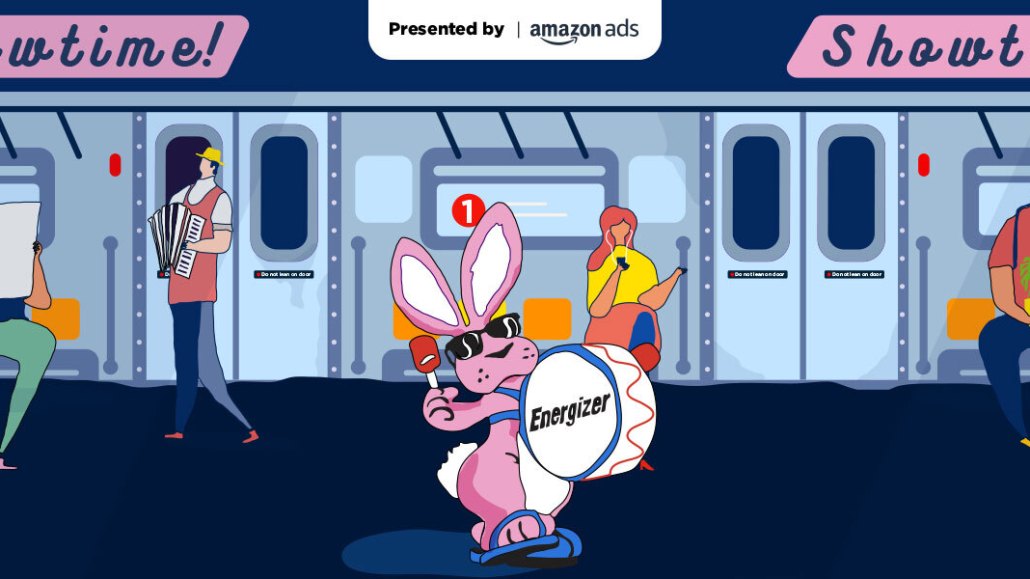Advertising Week Briefing: Why marketers are using brevity to get Gen Z’s attention

Keep up to date with Digiday’s annual coverage of Advertising Week in New York. More from the series →
Marketers are still looking to crack the code to market to Gen Z. That might be why myriad panels kicking off this year’s Advertising Week in New York, a hybrid event, focused on how to get the attention of Gen Z.
Those considered Gen Z, between the ages of 18 and 24, are less likely to find traditional marketing tactics appealing compared to older age demographics, like millennials, according to marketers and agency execs, who say there’s more of an overall focus on the young generation this year.
The Gen Z demographic has developed a unique relationship with digital technology and communication not shared by previous generations, as they were the first to grow up with smartphones and the Internet. It likely led to Gen Z having a shorter attention span which makes it crucial for marketers and agency execs to find ways to get their message across quickly.
That’s also played into the panels on Gen Z for this year’s event. As Gen Z becomes increasingly distracted by panels that last too long, they want information presented truthfully in less time. Organizers of panels took this to heart as most sessions lasted between 15 and 30 minutes.
“They’re going to places like YouTube, TikTok, Amazon Prime Video as they are much more digital with their mindset in finding something new and marketers need to be more in the mindset of what platforms Gen Z are using,” said Brian Hoyt, head of global communications at Tripadvisor.
It is, however, a slippery slope for marketers to assume they understand the needs and wants of these consumers. Since Gen Z is more digitally-savvy than older generations, they are less receptive to traditional marketing tricks in the same way that older generations were less receptive to them in the past.
“We have to follow where the consumers are and we have to find the eyeballs no matter what the generation is,” said Natasha Sinagoga, regional vice president of the TV advertising company ampersand.
Furthermore, they expect your products and services meet their needs and provide value. Gen Z doesn’t respond well to marketing for the sake of making a sale. The eyeballs of that demographic are crucial to getting them interested in a brand’s product since they prefer engaging with relevant brands that share their values.
“They are a smart generation and can see through an ad that is not a relatable tone with them,” said Jenifer Geller, head of brand partnerships of the global AI creator company Jellysmack. “They want authenticity, credibility, truth, and honesty.”
WSJ invests in live shopping
Buy Side from WSJ, The Wall Street Journal’s new standalone commerce site, is the first publisher to sign on to host a live shopping experience with Twitter, Emily Welsh, head of business development and marketing at Buy Side, said during an Advertising Week session on Monday morning.
Twitter’s shoppable live stream feature launched last November. Walmart was the first brand to use the feature, to promote its Cyber Deals Sunday sales event. The experience lets people watch a brand’s live broadcast on Twitter, shop featured products and comment during the stream at the same time. Brands can showcase up to 50 products in the experience, Welsh said. Since launching the feature, 375 live events have been hosted on Twitter, with 3.3 million hours watched and 264 million live viewers, Amanda Farrell, senior director of U.S. sales at Twitter, said during the session.
While it’s still “early days,” Farrell said brands who ran live events on Twitter saw a 2x lift in brand engagement on the day of the live event, and an 80% average lift in brand awareness. — Sara Guaglione
About that new venue…
Advertising Week has a new venue once again. The conference is now on the Lower East Side of Manhattan at The Market Line. While previous venues have had their own issues of crowding and smells, the new venue has yet to prove a better option.
For example, the front elevator is out-of-service, which meant everyone had to walk up three flights of stairs making the crowding worse. TV advertising company ampersand vp Sinagoga told us that the elevator was out since Sunday when she arrived at the building and said that it is “like a maze” due to the lack of maps in the building and that she was walking in her heels up and down those flights of stairs. Attendees also aren’t wearing masks despite the ongoing pandemic.
Coming up
10:35 am Buying CTV: The Power of Decisioning and Data on Premium Video, The Screening Room
10:35 am Loss of Liberties: Advertising at the Intersection of Bodily Autonomy, The Innovation Factory
11:30 am Pay No Attention to Attention, The Great Minds Stage
11:55 am Lessons for Brands from the 2022 Political Campaign Season, The Screening Room
1:30 pm The Impact of Effective Storytelling on Culture, The Creative Showcase
3:15 pm Incremental CPG Growth: The Convergence of Retail Data and CTV, The Screening Room
More in Marketing

How marketers rank this year’s generative AI image, video tools
Digiday’s 2025 agency generative AI report card explores the winners and losers of the generative AI landscape.

In memoriam: Brands we lost in 2025
Digiday Media staff rounded up some of the most notable brand names we lost in 2025, like Joann and Rite Aid.

Pandora is betting on AI agents to scale service and emotional selling during the peak holiday season
Pandora is using AI agents to scale customer service and replicate emotional in-store selling online, just as peak season puts pressure on margins and teams.





